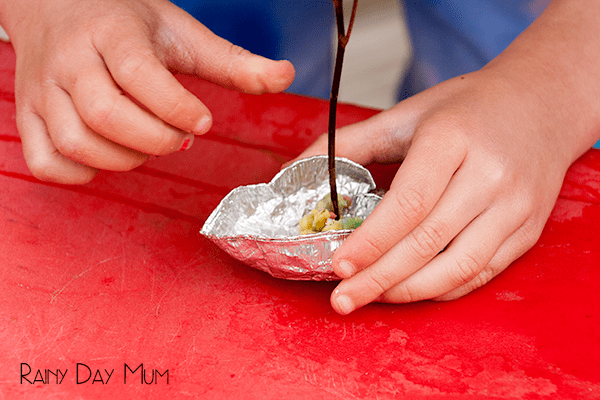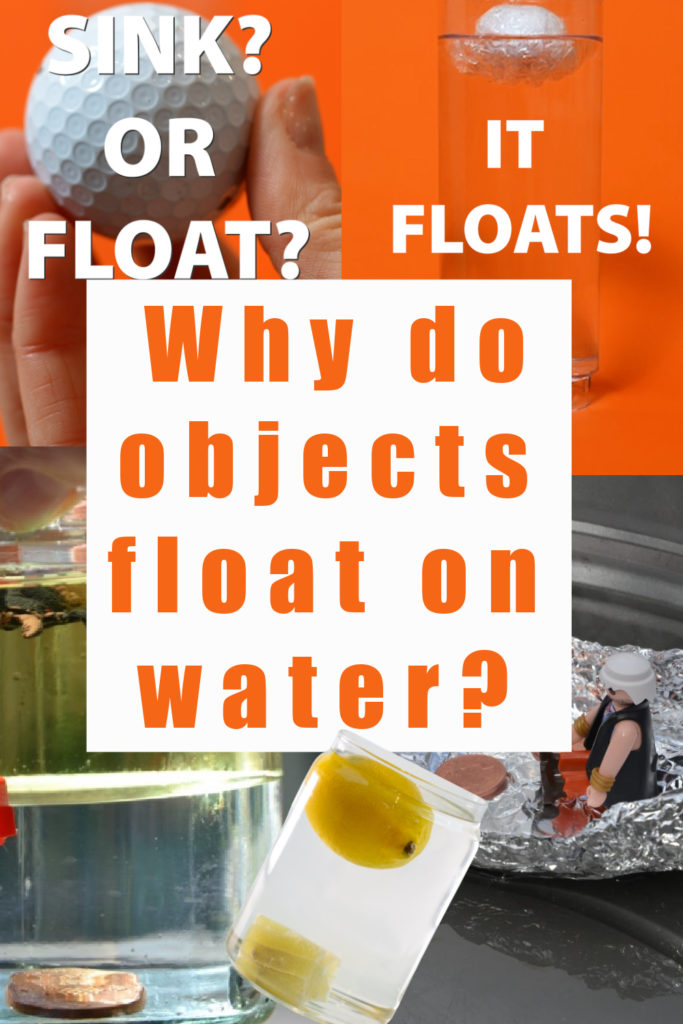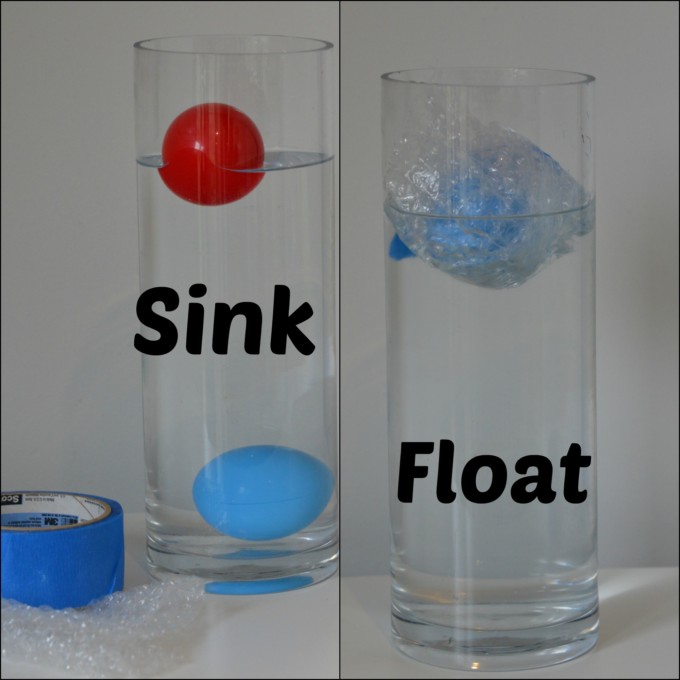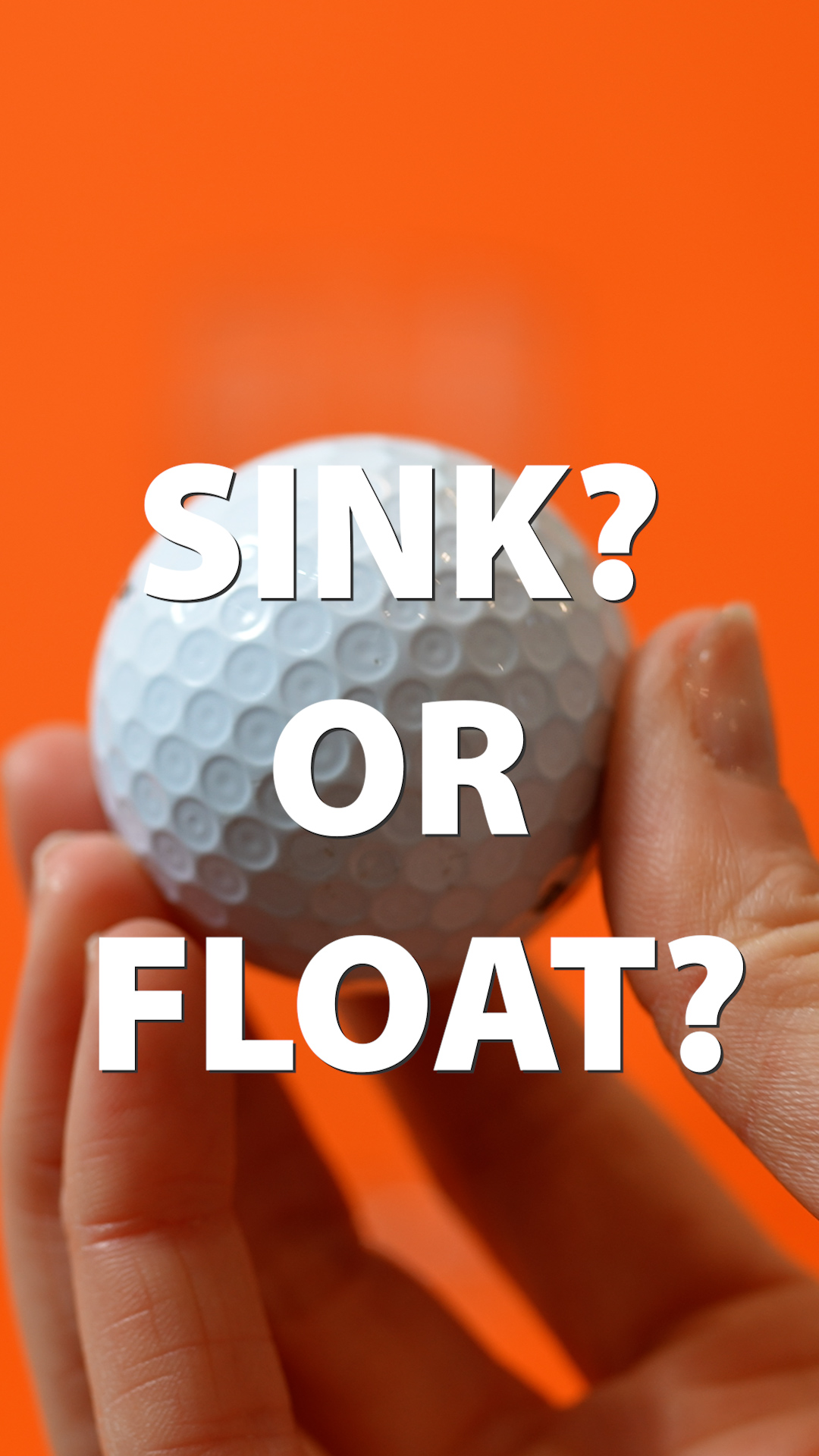This activity uses a bit of science trickery to make an object that sinks in water, float in water.
Why do things float in water?
Objects are made up of very tiny molecules. Molecules can be packed in close together like in a rock or more spread out like in bubble wrap. The positioning of molecules affects the density of an object. Objects with tightly packed molecules are more dense than those where the molecules are spread out.
Density plays a part in why some things float and some sink. Objects that are more dense than water sink and those less dense float.
Hollow things often float too as air is less dense than water. This is partly why huge heavy ships float. Another thing to consider is the shape of an object. Generally the more of the outside of an object that is touching the water the more buoyant it is. Water pushes back up against objects so the more surface area an object has the more water pushes back against it helping it to float.
When an object floats, it pushes water out of the way ( displacement ). Have you ever noticed that when you climb into a bath the water level rises? That’s because your body displaces ( moves ) the water.
This easy activity demonstrates how reducing the density of a heavy object allows it to float.
You’ll need:
A selection of different balls, one should sink in water
Bubble wrap
Tape
A container filled with water
Balls to use:
- Golf ball
- Ping pong ball
- Tennis Ball
- Hockey Ball
Instructions
First sort the balls into balls you think will float on water and balls you think will sink.
Do the balls which float all have something in common? Are they hollow?
Test each ball to see if your predictions are correct.
Take a ball which sank to the bottom of your container and wrap in bubble wrap.
Place the bubble wrapped ball on the surface of the water, you should find it now floats. If it doesn’t add some more bubble wrap.
Why does this happen?
Although the bubble wrap makes the ball weigh a little more, it also displaces extra water making the ball more buoyant.
The pockets of air in the bubble wrap mean that the ball and bubble wrap together are less dense than the water, which means the ball floats!
Extension Task
What’s the smallest amount of bubble wrap you can use to make your ball float?
Using the knowledge you’ve gained from this activity, how would you make a lemon sink?
Can you think of a different way to make the ball float? What if you made it a boat with plasticine?
Does the same technique work with other objects?
More sinking and floating activity ideas
Babble Dabble Do has a fabulous ship building activity to demonstrate how displacement helps objects float.
Can you make a superhero float? We made out superhero arm bands and a raft,

Rainy Day Mum has a lovely activity using boats made from pie tins.
Try a pirate themed sink and float investigation.
Find out how many coins it takes to sink a foil boat.
Learn about density with this easy investigation, can you find something to float on each layer?

Instead of making an object less dense by adding bubble wrap, try changing the density of water to help an object float.

Last Updated on February 1, 2021 by Emma Vanstone



Leave a Reply